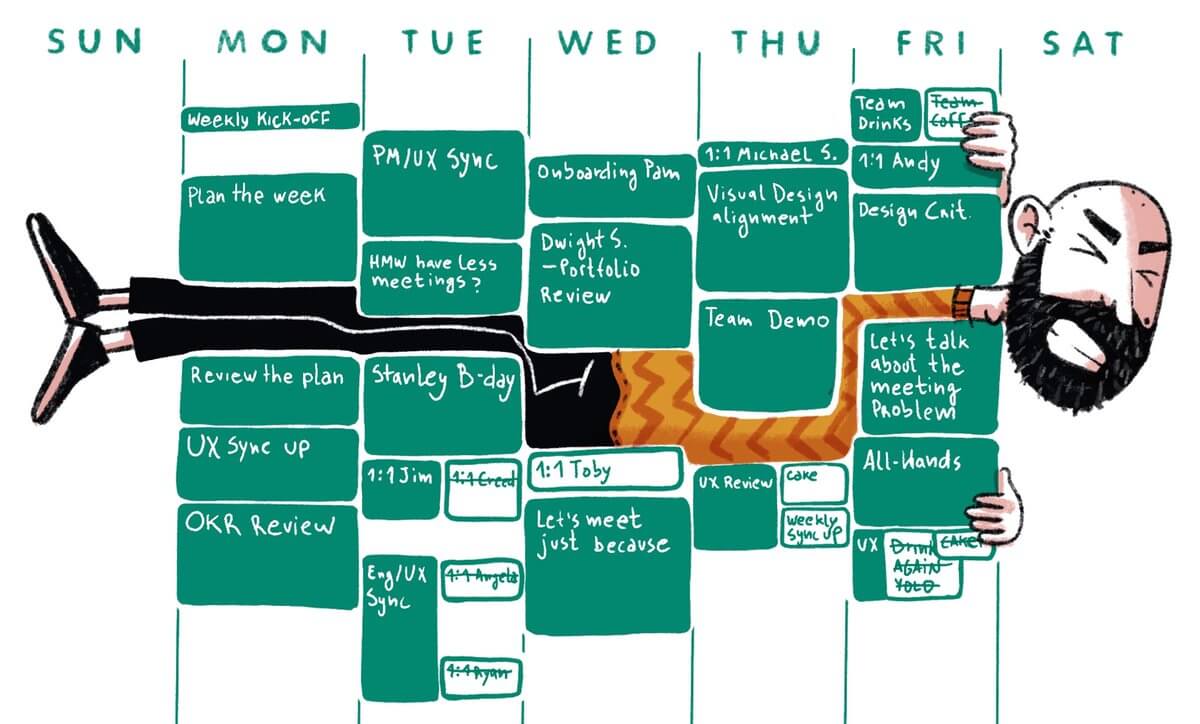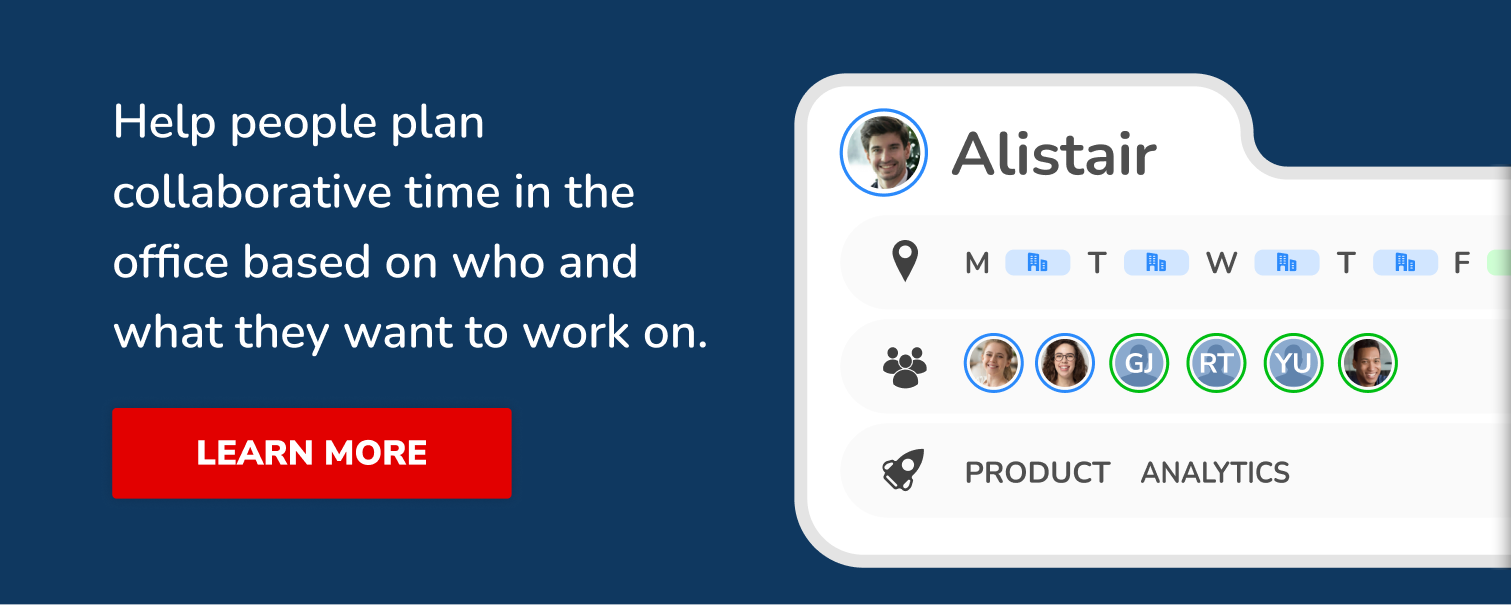A version of this blog first appeared in Unleash on 12 November 2021
During the Covid lockdown, time in meetings sky-rocketed as people spent endless hours on Zoom with multiple participants. As people return to the office, hybrid meetings - a mix of online and in-person participants - bring a new set of challenges as people attend from different locations. Companies will need to invest in technology for hybrid meeting environments that keep people’s attention and enable them to focus, irrespective of how they are participating. While companies experiment with the optimal way of making this happen, we need to challenge the assumption that a schedule packed full of meetings is a signal of output. The transition to a hybrid working environment is an opportunity for companies to dramatically reduce the amount of meetings while improving their quality. We need to get better at prioritising what we are working on over how much time we spend on things.
Busyness masks sloppy time management
No company can eliminate all meetings. The right ones are essential for decision making and fostering collaboration, but most organisations have allowed way too many to take place. A study of digital communication patterns in March 2020 in large metropolitan areas in North America, Europe and the Middle East found that not only was the average worker attending 13% more meetings per week, but 13.5% more attendees were attending per meeting.
While technology is enabling us to work anywhere at any time, this doesn't mean we should be expected to work everywhere all the time. A diary full of meetings might use up all your time, but being that busy really means that you will have difficulty accounting for how you are spending it. If you don't feel like you have time, you don't have priorities, says Tim Ferriss, author of the productivity book ‘The 4-Hour Workweek.’ Too many competing initiatives risks that most of what we are doing will make no difference.
Businesses think carefully about how to charge for their services, but care much less about the internal cost of their employees. When there is no real price associated with it, requesting employees’ time won’t be properly valued while wasting their time won’t carry consequences.
Walter Isaacson, the author of the best-selling Steve Jobs biography, describes how Jobs relentlessly filtered out what he considered distractions in order to focus Apple’s best efforts. Jobs was known for asking his top 100 executives to identify the company’s leading 10 priorities for the year ahead, upon which he would delete the bottom seven, announcing “we can only do three.”
People spending less time in the office has leaders worried about losing control, because they can no longer ‘observe’ people at work. But we should be mindful not to allow presenteeism to simply be replaced by the notion that omnipresence in meetings is somehow desirable as a measure of endeavour, or self-importance.
Managing our interactions better starts with fewer, higher quality meetings

Improving the quality of meetings means reducing the overall number of meetings going on and limiting the number of people involved.
If we have little to show for the ever-increasing number of hours we spend away from our families and friends, we need to start putting purpose ahead of presence. In order to value organisational time as the scarce and often squandered resource it is, we should commit to managing our interactions better and improving how we disseminate the information and findings from internal meetings.
To start with, many meetings that take place in organisations are internal recurring meetings, or meetings scheduled to share information that is not urgent. Without a business case, or clear purpose, such meetings tend to involve too many people because the role of participants has not been thought through. Over-inviting people is one reason for the rise of dysfunctional meetings behaviour such as routinely sending emails when others are speaking or double booking in order to choose which meeting to attend at the last minute. The practice of scheduling meetings as placeholders has become somewhat of a ‘spectator sport’; however, meetings that don’t reach decisions should be seen as costly.
Monetising human capital helps to prioritise effort
The time an organisation spends on itself tends to go largely unmanaged with very few governance guidelines. The most valuable asset of any organisation is its people, and yet while most companies have detailed procedures for managing financial capital, far fewer have formal budgets for managing organisational time. No one is accountable for scheduling internal meetings, and so they abound.
Just as capital budgets are designed to allocate financial resources efficiently, time budgeting can serve to increase our awareness of how many hours we allocate to a task, and more importantly, how much of other people’s time we presume to allocate. We often quip that time is money, but just as consultants and professional firms will be well aware of how much time they bill their clients for certain tasks, assigning an internal monetary value to people’s time can help to highlight the potential cost of misusing it.
The further we spread our time, the contribution we can reasonably make becomes qualitatively poorer. As our attention becomes divided more than ever, we should acknowledge that taking on too much dilutes our focus and blurs our decision making process. We should not overlook that there are simple rules and frameworks that can help us make better decisions faster and safely postpone what is not urgent. In her book ‘How to Decide,’ former professional poker player Annie Duke outlines simple tools for sorting decisions so you can identify which ones are bigger and which ones are smaller. Surgeon Atul Gawande’s best-seller ‘A Checklist Manifesto,’ explains how to break down complexity into small steps by virtue of simple checklists and basic guidelines.
A simple meetings cost calculator, for example, could help us to think in advance about the human capital cost of all the meetings we create. If we set limits for reasonable hours that can be spent on meetings associated with recognisable initiatives and clear objectives, then that time will be spent more productively.

Understanding what people are working on needs a better system, not more meetings
As we become more accustomed to hybrid working - optimising the work we do by location - we will spend less time in the office. Sharing information for consideration does not require people’s attention at the same time, so it does not need to be done in a meeting. This means that when we are in the office, we can focus on intentional collaboration - working on the ‘right topics’ with the ‘right’ mix of people.
To make the best use of more limited office time in our hybrid working future, we need to reduce the volume of meetings and make use of alternative platforms that enable us to communicate and consume information at different times. As colleagues start to work in different patterns and in different places, being able to share and contribute to work in progress in a uniform way without switching to different apps for live catch ups is critical.
As people no longer sit alongside each other every day, nor work the same hours, understanding what the team is working on needs a better system, not more meetings. Making work ‘visible’ means ensuring it is available, understandable and actionable. Choosing a platform that enables written notes from meetings or work in progress to be easily shared and retrieved by other team members at different times preserves productivity.
An organisation that supports transparency is where the ‘right’ people attend fewer meetings. Higher quality meetings make accountability for progressing priority decisions clear and the allocation of required effort straightforward. This discipline will improve the experience of the people involved and liberate others from being over-scheduled and expending effort on the ‘wrong’ things. Thinking about the coordination of work as a system, not a set of meetings, will help teams to understand what’s being worked on as it comes together, irrespective of where it’s being done. When we can allocate our time more deliberately and work on what matters, we are better equipped to prioritise our efforts and focus on outcomes.








